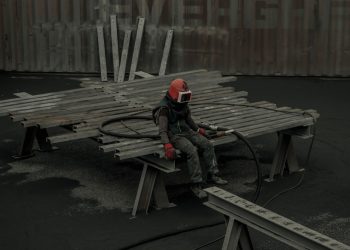No products in the cart.
The AI Test: Which Jobs Are Safe, Which Aren’t
Microsoft’s July 2025 research reveals the jobs most — and least — exposed to generative AI. From journalists and translators to rail-track operators, the findings challenge old assumptions about career safety. For students and young professionals, the message is clear: adapt fast, build AI fluency, and lean into uniquely human skills.
A history student told me recently she’d stopped applying for internships. She’d wanted to get into publishing, but the line she kept hearing from recruiters was the same: “We’re trying Copilot for that now.”
That’s it. A single sentence, but it says so much about the moment we’re in. The very roles that once looked “safe” because they needed education, language skills, or judgment — editing, teaching, writing — are the ones AI is eating into first.
Microsoft’s research team made this official in July. They crunched millions of real Copilot interactions and ranked the jobs most — and least — exposed to generative AI. And the list is… uncomfortable reading if you’re a student, grad, or early-career professional.
The Jobs AI Is All Over
Take a glance and you’ll see the pattern right away. Not hard hats, not grease under fingernails. Desk jobs.
- Interpreters and translators
- Historians
- Writers and authors
- Journalists and news analysts
- Customer service reps
- Technical writers, editors, PR specialists
- Data scientists, personal financial advisors, market research analysts
Notice the common thread? They’re all about words, numbers, or routine digital output. That’s exactly the kind of work a chatbot can churn out at lightning speed. Drafting reports, summarizing findings, answering questions — the “grind” part of knowledge work.
But here’s the thing Microsoft emphasized: not a single job was found to be fully automatable. None. So if you’re in one of these fields, your career isn’t “gone” — but the ground under your feet is shifting fast.
Dredge operators Rail-track laying and maintenance workers Water treatment plant operators Logging equipment operators Foundry mold and core makers These roles need hands-on skill, physical presence, site-specific awareness.
The Jobs AI Can’t Touch (At Least for Now)
Now look at the other end of the spectrum. The “least exposed” list is full of jobs that feel, honestly, a world away from Zoom calls and Google Docs.
- Dredge operators
- Rail-track laying and maintenance workers
- Water treatment plant operators
- Logging equipment operators
- Foundry mold and core makers
These roles need hands-on skill, physical presence, site-specific awareness. You can’t replace a rail worker with ChatGPT. You can’t outsource floor sanding to Copilot. Until robotics catches up, these jobs stay firmly human.
It flips the old assumption: for years we thought “get a degree, get a desk job, you’ll be safe.” Now it’s the exact opposite.
Why a Degree Doesn’t Equal Safety Anymore
This part stings. Because so many of us grew up hearing that higher education was the shield against automation. But Microsoft’s research, and plenty of other studies, are showing otherwise.
Stanford found that early-career workers in AI-prone fields like coding and customer service saw a 13% drop in employment since late 2022. Business Insider reported that over half of Gen Z grads feel their degrees are already devalued by AI, with recruiters prioritizing AI skills over university credentials.
So the uncomfortable truth: your diploma still matters, but it doesn’t “protect” you. What matters more is whether you can work with AI, guide it, and do the parts it can’t.
It’s Not Annihilation, It’s Augmentation
Now, before we all panic, let’s breathe. The Microsoft report wasn’t doom and gloom. It didn’t say “these jobs are gone.” It said, “these jobs are changing.”
The grunt work shifts, but the human edge — creativity, judgment, empathy — is still yours to bring.
Think of AI as an intern on steroids. Fast, tireless, no sleep needed. It can write drafts, crunch data, summarize 50-page reports in 30 seconds. But here’s what it can’t do:
- Investigate like a journalist chasing a lead.
- Motivate like a teacher in front of a restless class.
- Earn the trust of a client nervously asking about their finances.
The grunt work shifts, but the human edge — creativity, judgment, empathy — is still yours to bring.
The Broken “Entry-Level” Ladder
One group feels this disruption most sharply: new grads. Traditionally, you’d join as a junior, learn on the job, climb slowly. But guess what? Most “junior” tasks — data entry, summarizing, scheduling — are now what AI does best.
That leaves recruiters asking for candidates who already know how to direct AI tools, not people hoping to “learn from scratch.” In other words, the old career ladder? Kind of broken.
So graduates are improvising. Building portfolios, freelancing, stacking hybrid skills — marketing plus analytics, design plus coding, writing plus AI fluency. It’s less linear, more patchwork. But it may also be more resilient.
What to Do If You’re Starting Out
So, what’s the play if you’re 22 and staring at this chaos? A few things stand out:
Treat it like Excel in the 1990s — a core skill everyone’s expected to know.
- Learn AI, don’t fight it. Treat it like Excel in the 1990s — a core skill everyone’s expected to know.
- Double down on human strengths. Communication, empathy, leadership, persuasion — the things machines don’t “feel.”
- Build proof, not just a CV. A portfolio showing what you’ve made with (and without) AI is more convincing than a line on a degree.
- Look at resilient fields. Healthcare, skilled trades, and hands-on services aren’t going anywhere. Hybrid roles will matter most.
So, What’s Next?
Here’s the bigger picture. For decades, the big forces reshaping jobs were outsourcing and globalization. Today, it’s algorithms. Not factories moving overseas — but software that rewrites the rulebook at home.
Universities will have to adapt. Governments will have to rethink worker protections. And Gen Z, the first “AI-native” workforce, will have to carve out paths that mix machine fluency with human spark.
Microsoft’s study makes one thing clear: jobs aren’t vanishing wholesale, but they are transforming. And those who transform with them — faster learners, flexible thinkers, people who can pair AI with human skills — they won’t just survive. They’ll lead.
Your Turn: Do you see AI as a threat or a sidekick in your field? We’d love to hear — share your thoughts with Career Ahead Online and join the conversation shaping the future of work.
References
- Microsoft Research, Occupational Exposure to Generative AI (2025)
- Fortune, “Microsoft Research reveals jobs most and least likely to be impacted by AI” (July 31, 2025)
- Stanford University, AI and Employment Outcomes for Early-Career Workers (2025)
- Business Insider, Tech’s broken career ladder (April 2025)
- SF Chronicle, AI cutting jobs among 22–25 year olds (2025)











